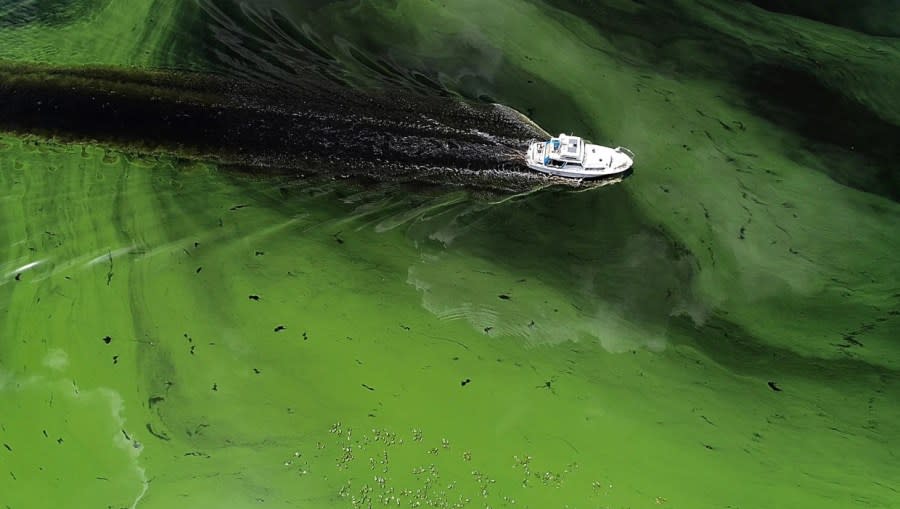Toxic algal bloom season begins in Kansas, as problem gets worse

KANSAS (KSNF) — Water recreation season has started in Kansas, as people are getting out on state waterways to boat, swim, or fish. But before Kansans get in the water, health officials want to remind people to watch for harmful algae blooms across the state.
According to The Kansas Department of Health and Environment (KDHE), a harmful algal bloom (HAB) may look like foam, scum, or paint floating on the water and be colored blue, bright green, brown, or even red.
KDHE says these blooms can develop rapidly and warns that if the water appears suspicious or there are decaying algae on the shore, you should avoid contact. KDHE adds that the toxins can be absorbed by ingestion, inhalation of aerosols, and even skin contact. Symptoms vary depending upon the type of exposure (direct contact, ingestion, inhalation) but can include rash, vomiting, diarrhea, fever, sore throat, and headache.
Pet owners should also be aware of animals swimming in or drinking water affected by a HAB, or eating dried algae along the shore may become seriously ill or die. If you or your pets come into contact with algae, state health officials say you should rinse the area with clean, fresh water.
| Spring Drought Conditions In Kansas, Missouri >
Kansas has three advisory levels regarding harmful algae blooms:
Hazard Status — Indicates that a harmful algae bloom is present, and extreme conditions exist.
Warning Status — Indicates that conditions are unsafe for human and pet exposure. Contact with the waterbody should be avoided.
Watch Status — This means that blue-green algae have been detected and a harmful algae bloom is present or likely to develop. People are encouraged to avoid areas of algae accumulation and keep pets and livestock away from the water.
Current advisories can be found, HERE.
Toxic Algae Blooms Spreading To Other States

The dangerous blooms of algae found on Kansas waterways are reported to be worsening — spreading out across the Great Plains.
A new study shows that the blooms have become larger and more frequent in many of the world’s largest lakes since the 1980s, with lakes that have warmed the least over the past 30 years showing less intense algal blooms.
| High-Intensity Tornado Occurrences Increased Over Last 20 Years >
A team of scientists recently studied the algae conditions on nearly 3,000 U.S. lakes. According to their findings published last fall, the harmful blue-green colored algae are growing more toxic as global temperatures increase.
The team of scientists concluded that harmful algae blooms will happen more frequently in lakes farther and farther north as water gets warmer. Their study says an over-abundance of nitrogen in U.S. waterways is to blame, and will “supercharge” the problem.

